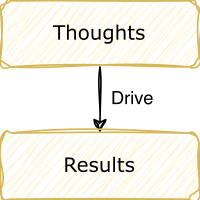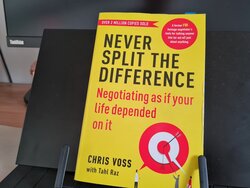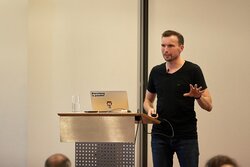
The “Thought Model” is a coaching model to steer a coaching conversation. It helps when the coachee wants to explore new ways of thinking about a problem, which in turn can lead to a changed behavior and the desired results. This post contains the digest of this model and a cheat sheet to ease the application in a conversation.

Coaching is a powerful approach to helping people solve their challenges and supporting their growth. To implement a coaching practice, it’s important to learn how to steer a coaching conversation and what concrete questions and tools can be used in each conversation phase. This post provides a concise and hands-on model and toolbox of the coaching questions and tools I gathered over the years. I compiled everything into a cheat sheet called the “Coaching Steering Wheel”.

One-on-Ones are one of the most important and powerful tools for leaders. If done well, they can help you to spot issues before they escalate, unblock, establish trust, foster a culture of mutual feedback, and ensure the growth of all participants. This post provides a template incorporating the principles for great one-on-ones to achieve this more easily.

I enjoyed reading the classic “Never Split The Difference” by Chris Voss. It contains many tools for negotiations but also for building relationships, trust and dealing with conflicts and emotions. That’s why it is very valuable for engineering managers. In this post, I summarize my key takeaways and lessons learned.

I’ve been using KeePassXC as my password manager for many years now. Here are my tips and recommendations to get the most out of KeePassXC.

Last September, I hold my talk “Leveling Up in Job Interviews” at the JUG Saxony Day 2022 near Dresden. You can find the slides (English) and the recording (German) of my talk in this post.

Have you ever applied for an engineering job but got a rejection? Most of the time, the job interview decides about the hire. This post takes you to the other side of the table and prepares you for challenging interviews. We point out which technical skills, traits, values, and cultural aspects are relevant and which questions are asked to assess them. This post is for engineers who want to stand out in their next interview.

I enjoyed reading “Effective Remote Work” by James Stanier. I wrote down my lessons learned and posted them on Twitter and LinkedIn. Surprisingly, the response was very positive which make me very happy. So I made a blog post out of the content to make it persist and easier to find later.

Good performance reviews should be as fair and objective as possible, communicate expectations clearly, and point out concrete areas of improvement. For this, we use a skill matrix as a systematic assessment tool containing skills tailored to the role of a software developer. This post is a hands-on guide to applying a skill matrix in practice.

Management is not something you “just do intuitively” and it will work out by itself. Instead, management is a craft that you can - and should - learn. It’s about knowing the right tools and approaches and learning skills that help you to lead a productive, happy and motivated team. In this post, we visualize these skills as a “Skill Tree” like in a video game. Have a look. It will be fun and insightful!









